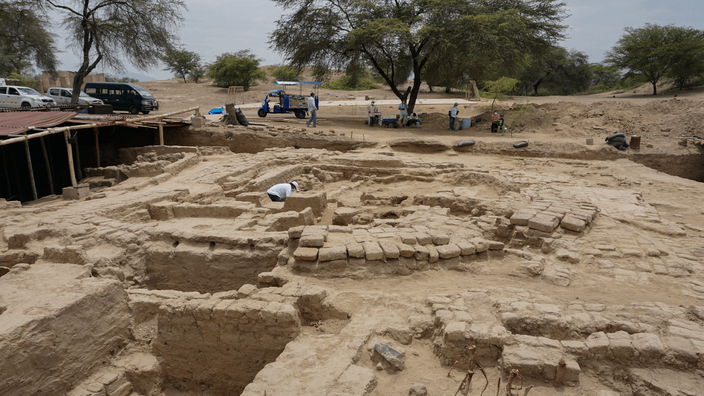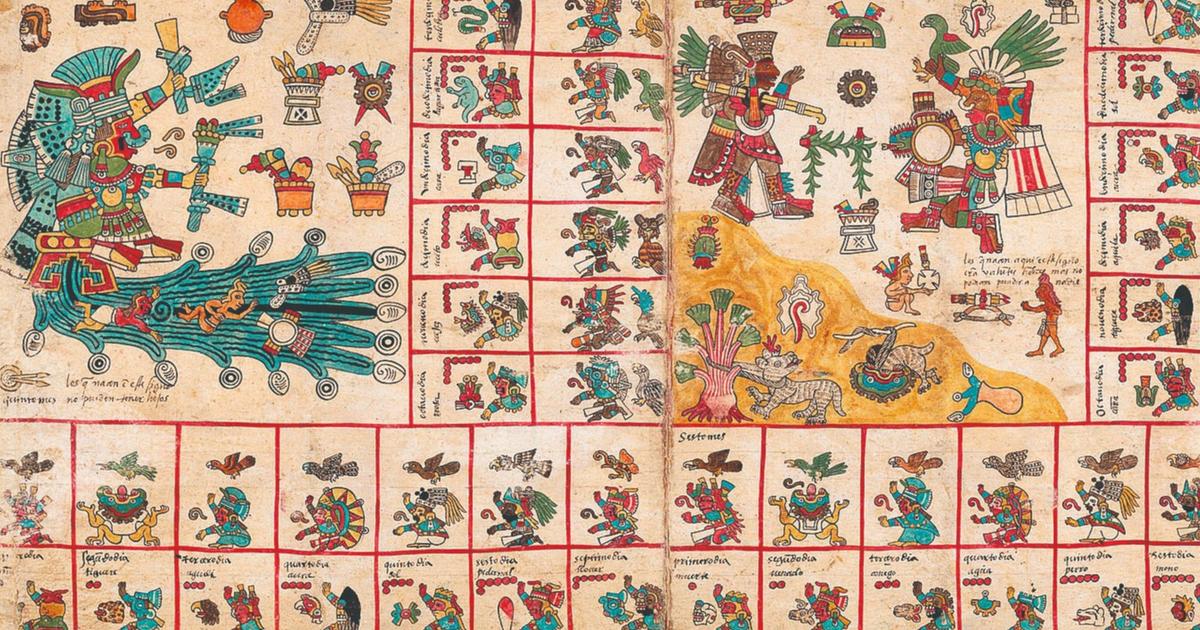Fortunately, the archaeologists did not have to make all the sacrifices to come to the end of their excavation site.
A team of Peruvian researchers have discovered the bones of 29 bodies in northern Peru, including those of three children, which could help experts better understand the pre-Inca Wari (or Huari) civilization.
These archaeological remains buried over a millennium ago were found in Huaca Santa Rosa de Pucala, in the former ceremonial center of a temple in the coastal region of Lambayeque, 750 kilometers north of Lima.
Read also Extremely rare, the diatrete vase from Autun regains its crystalline luster
Contemporary of the European High Middle Ages, this site also concealed the trace of a ritual practice for the less trenchant: that of human sacrifices.
At least that's what South American archaeologists were able to conclude when analyzing the burial of the three children found, as well as that of a teenager identified at the front of the temple, told AFP. the person in charge of the excavations Edgar Bracamonte (National University of Trujillo).
One of the graves excavated by Peruvian archaeologists in Lambayeque.
MUSEO TUMBAS REALES DE SIPAN / AFP
Apart from this discovery, the excavation has above all enabled Peruvian archaeologists to thoroughly examine one of the most northerly sites relating to the Wari civilization.
Its remoteness from the historical zone of influence of this pre-Inca empire, located around the current city of Ayacucho (province of Huamanga) “
allows us to rethink the history of the region of Lambayeque, in particular the links with the occupations Wari and Moche in the region,
”said Edgar Bracamonte for AFP.
Read alsoThe Huaris, this pre-Inca civilization which based its domination on beer
Empire before empire
Among the 29 human remains discovered in the temple,
"25 belonged to the Moche era and four to the Wari culture
,
"
said the archaeologist. The Wari built an empire that reached its peak between the year 600 and 1200, spreading over the coastal and Andean parts of present-day Peru. It declined shortly before the height of the Incas, around 1400-1530. The Moche culture (or Mochica) developed from the 1st century BC until the 8th century. D-shaped, the ceremonial temple excavated at Lambayeque seems to have been built in the 9th century AD, at a time - and a region - which could have known a phase of transition between these two peoples.
One of the most significant discoveries linked to the Moche culture, with the unearthing in 2006 of the mummy of the “Lady of Cao”, dating from the fifth century, had upset the previously accepted hypotheses by showing that women could play a major political role in pre-Columbian civilizations.
The discovery in 1987 of another mummy, that of the “Lord of Sipan”, dating from the third century, is considered by experts as one of the most important archaeological discoveries of recent decades in the country.





/cloudfront-eu-central-1.images.arcpublishing.com/prisa/2P2FATFESJDD5BB6NR7VLSJ7QY.jpg)
/cloudfront-eu-central-1.images.arcpublishing.com/prisa/V7IVCNSXOVEJNPND426WBWSWJE.jpg)
/cloudfront-eu-central-1.images.arcpublishing.com/prisa/3TOQKX7CUJEMHBMHIA7GJRIXC4.jpg)

